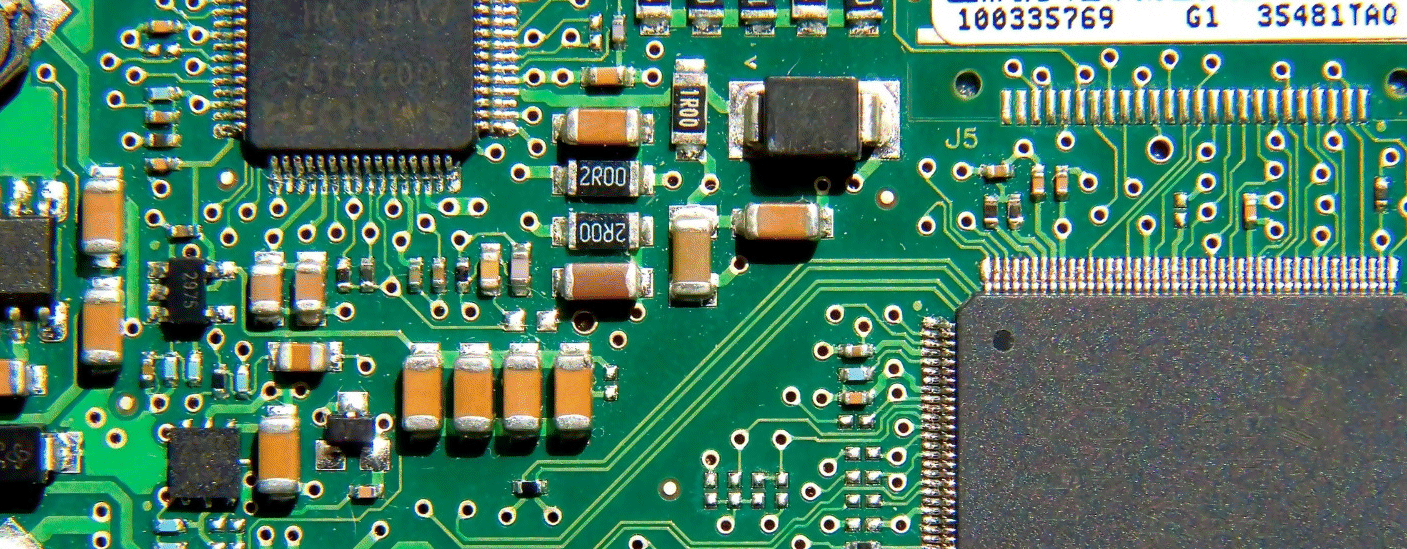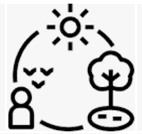
Technology Ecosystems and the SDGs

| Hari Srinivas | |
| Policy Analysis Series E-193. April 2023. |
Abstract:
The Sustainable Development Goals (SDGs) were adopted by the United Nations in 2015 as a universal call to action to end poverty, protect the planet, and ensure peace and prosperity for all. The SDGs consist of 17 goals and 169 targets, covering a wide range of social, economic, and environmental issues. Achieving the SDGs requires a coordinated effort from governments, civil society, the private sector, and individuals.
This document provides an overview of the SDGs and their targets, as well as information on how the SDGs are being implemented around the world. The document also highlights the role of technology in achieving the SDGs, including examples of innovative solutions that are already making a difference.
The SDGs are interconnected, and progress in one area can have positive effects on others. For example, reducing poverty can contribute to better health outcomes and increased access to education, which in turn can help to achieve gender equality and reduce inequality more broadly. The SDGs are also closely linked to the concept of sustainable development, which emphasizes the need to balance economic growth with social and environmental considerations.
The SDGs are ambitious, and achieving them will require significant investment and commitment. However, the benefits of achieving the SDGs are enormous, both in terms of human well-being and economic development. By working together and harnessing the power of technology, it is possible to create a more equitable and sustainable world for all.
Keywords:
Sustainable Development Goals, SDGs, technology, implementation, interconnected, sustainable development, poverty, inequality, gender equality, economic development.
A
dopted at the United Nation Sustainable Development Summit in September 2015, the Sustainable Development Goals (SDGs) are a UN initiative of 17 goals and 169 targets to end poverty, fight inequality and injustice, and tackle climate change by 2030.Also known as "Transforming Our World: the 2030 Agenda for Sustainable Development", this international agreement among UN members focuses on a broad range of interconnected economic, social and environmental objectives. These objectives address the world's biggest challenges, and the plan is to achieve them through multi-sectoral global partnerships.

Technology management will play a critical role in achieving the SDGs set by the United Nations. Technology can be used to address a wide range of issues related to the SDGs, such as poverty, hunger, health, education, and the environment.
For example, technology can be used to improve access to education and healthcare in remote and underserved areas, to increase agricultural productivity and food security, and to promote sustainable energy and transportation systems. Effective technology management is essential for identifying and developing appropriate technologies, as well as for ensuring that they are adopted and used effectively to achieve the SDGs.
The SDG Context
The UN has identified technology, science and capacity building as major elements of the "Means of Implementation of the Post-2015 Agenda" and of the "Rio+20 follow-up" processes. Of particular proiority for the UN is environmentally sound technologes (ESTs) and their effective research, development, deployment, and widespread diffusion.
Technology is also a priority policy target in the context of a green economy, along with innovation, business opportunities and development, trade of environmental goods and services, finance and investment, and institutional capabilities.

In 2012, the UN Conference on Sustainable Development ("Rio+20") called for identifying a technology facilitation mechanism, and the Addis Ababa Action Agenda, in its paragraph 123 [See Appendix 1], decided to establish a technology facilitation mechanism. These trends highlight the critical importance being accorded to technology issues within the larger processes of implementing the SDGs.
Understanding a "Technology Ecosystem"
 An ecosystem is a community of complex networks of interconnected organisms or systems. In living organisms' case, it entails how they interact to form relationships in communities that provide security, food, shelter, emotional and physical support.
An ecosystem is a community of complex networks of interconnected organisms or systems. In living organisms' case, it entails how they interact to form relationships in communities that provide security, food, shelter, emotional and physical support.
Taking a leaf from nature, a "technology ecosystem" is a network of interconnected and interdependent technology-based products, services, and organizations (including businesses) that work together to create a cohesive and mutually beneficial environment for their users and customers. It often includes hardware, software, and services providers, as well as companies that support and complement the ecosystem with related products and services.
Technology ecosystems support economic growth through pooling resources and sharing technologies and applications developed to boost each stakeholder's productivity and contribution to the SDGs. Such ecosystems helps make existing systems easier to maintain, and provides opportunities in unexpected areas and use cases that may not have been originally anticipated.

The GET Dimentions of Technology Ecosystems
GDRC advocates the GET framework to understand the components of a technology ecosystem, as illustrated in the figure above. It brings together three management systems - governance, education and technology itself to create a technology ecosystem. Such a management framework, with its constitutent stakeholders and policy dimensions, can help in streamlining technology action for the SDGs.
A technology ecosystem is therefore a collection of technology solutions (and how these interact with each other) that a community or city can use to manage its sustainability challenges. Creating such an ecosystem for technologies to contribute to SDGs can be an effective approach to accelerate meeting the SDGs& targets.
Setting up a technology ecosystem
A technology ecosystem can be created through a variety of means, including:
- Developing a core technology or platform: This can be a hardware or software product that serves as the foundation of the ecosystem. Such a platform will enable data and data systems to be integrated (for example the status of various environmental sensors and the data that they are collecting).
- Building a network of partners: This can include companies that provide complementary products and services, such as hardware manufacturers, software developers, and service providers: community groups and NGOs, Universities, and government agencies and other public institutions. This will enable various different actions (governance, education and technology actions) to be taken by differet actors to be interlinked and coordinated/monitored within the technology ecosystem
- Encouraging developer and user communities: This can include creating developer tools, documentation, and resources to support the ecosystem, as well as building a user community to provide feedback and help shape the ecosystem's development. Such user communities can also help in coordinating and monitoring the local environment and the relative roles that SDGs can play in finding technology solutions to enhance its quality.
- Offering incentives for participation: This can include inputs such as financial incentives, exclusive access to new features and technologies, or marketing and promotional support. Ensuring active participation of a wide variety of stakeholders using the technology ecosystem can bring in different resources and skills into play for implementing the various requirements for SDGs implementation.
- Creating a governance structure: This can help ensure that the ecosystem is healthy and sustainable, by creating a framework for decision-making, resolving disputes, and managing intellectual property. Appropriate laws, rules and regulations also form an important part of the governance component to guide action - both encourage positive actions and curb negative behaviours and choices.
- Continuously innovating and improving: A technology ecosystem must be open to change and adapt to the evolving needs of its users and partners - particularly depending on how the local environment changes and .
Also see:
"Technologies for the SDGs: Focus on Environmentally Sound Technologies (ESTs)". GDRC Research Output: Policy Analysis Series E-132.
Appendix 1:
Addis Ababa Action Agenda, paragraph 123
123. We decide to establish a Technology Facilitation Mechanism. The Mechanism will be launched at the United Nations summit for the adoption of the post-2015 development agenda in order to support the sustainable development goals.
Source: International Telecommunications Union (ITU - www.itu.org)
Appendix 2: ICTs and SDGs
|
|
|
|
Return to Technology Management Comments and suggestions to - hsrinivas@gdrc.org |
